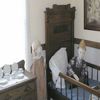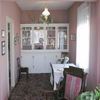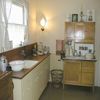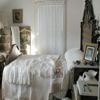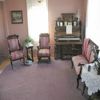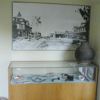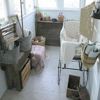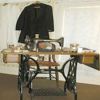| This building is part of a hotel built in 1876 near what is now the southwest corner of Main Street and Magnolia Avenue. Originally a two-story, seven-room structure serving as Knox's residence and hotel, it soon boasted an add-on dining room for guests on the east side.
Back in 1870, when gold was discovered in Julian, the growing travel on the road between it and San Diego, led Knox to recognize the need for a hotel. That's because what is now the City of El Cajon was halfway between the two, and teamsters, miners, and drovers stopped for the night at the bend in the road (Magnolia and Main) where the road turned north toward Julian. Knox built a hotel and some corrals at a cost of $1,000. The parlor area was the first post office and Mr. Knox was the postmaster for 90 residents. The original building became the house of Mr. and Mrs. Knox and their four children while they ran a 24 room hotel. The years 1895-1912 are what the Knox House Museum reflect. The products found on display were easily available to anyone within driving distance of a railroad. In 1912 the area was incorporated as the City of El Cajon.
In 1915, new owners added an annex and moved the building to the rear of the lot. In the 1940s, when new construction was scheduled for the south side of Main Street, the building was purchased by S.H. Mathews, who had it moved to the southeast corner of Lexington and Magnolia Avenues to become his family home. In 1972, the City of El Cajon purchased the hotel from the Mathews estate and moved it to its present location to become the historical focus of the City. The City is responsible for the exterior of the building and the grounds, while members of the Historical Society maintain the interior and conduct tours.
|

